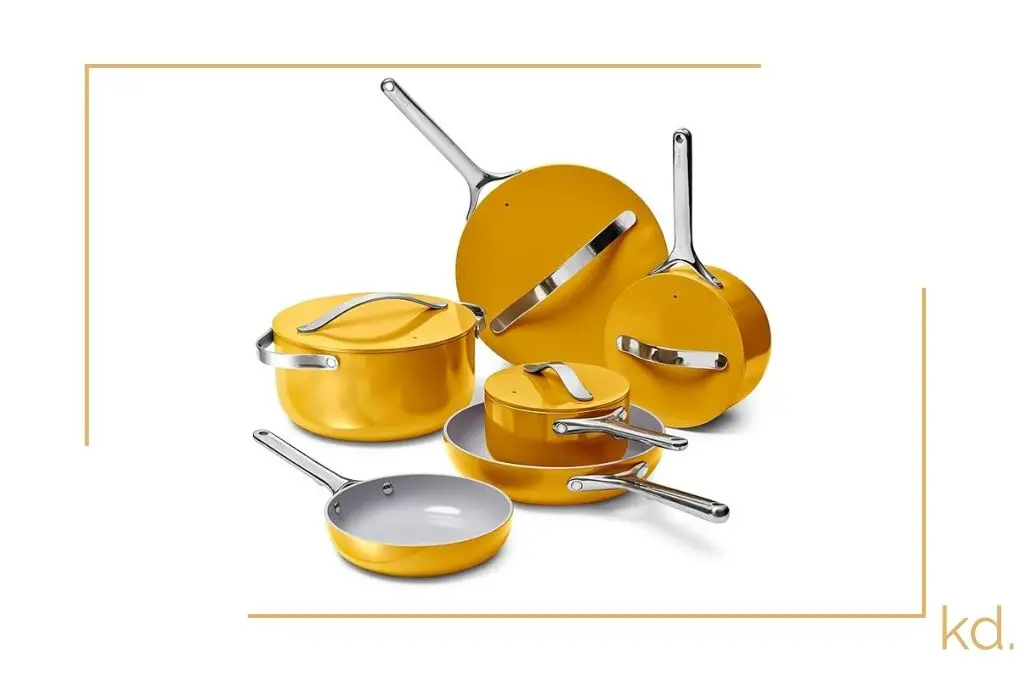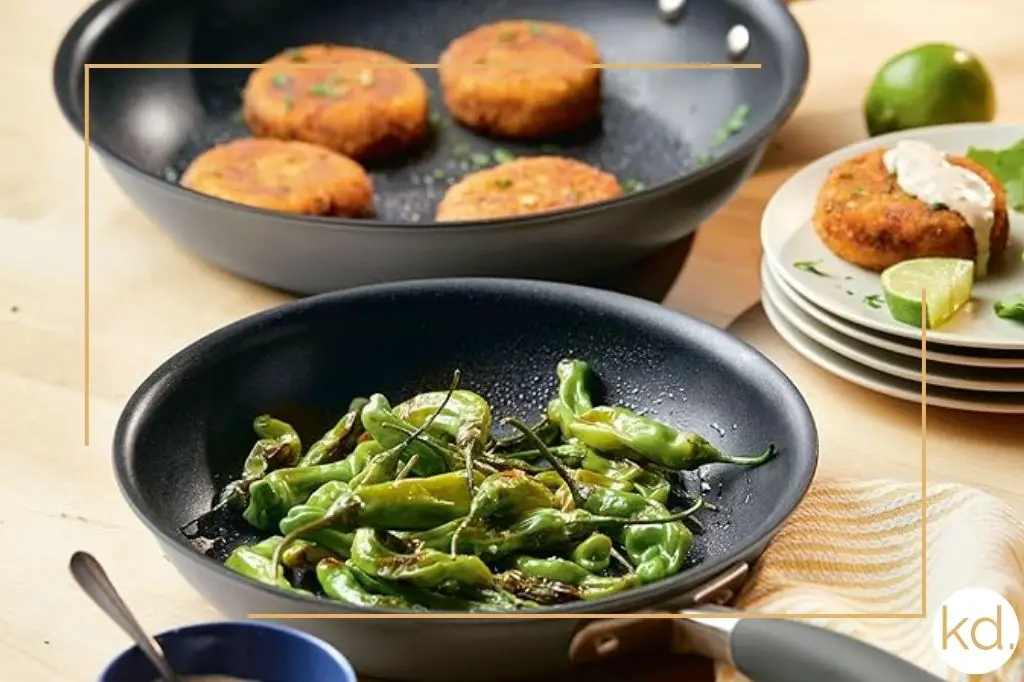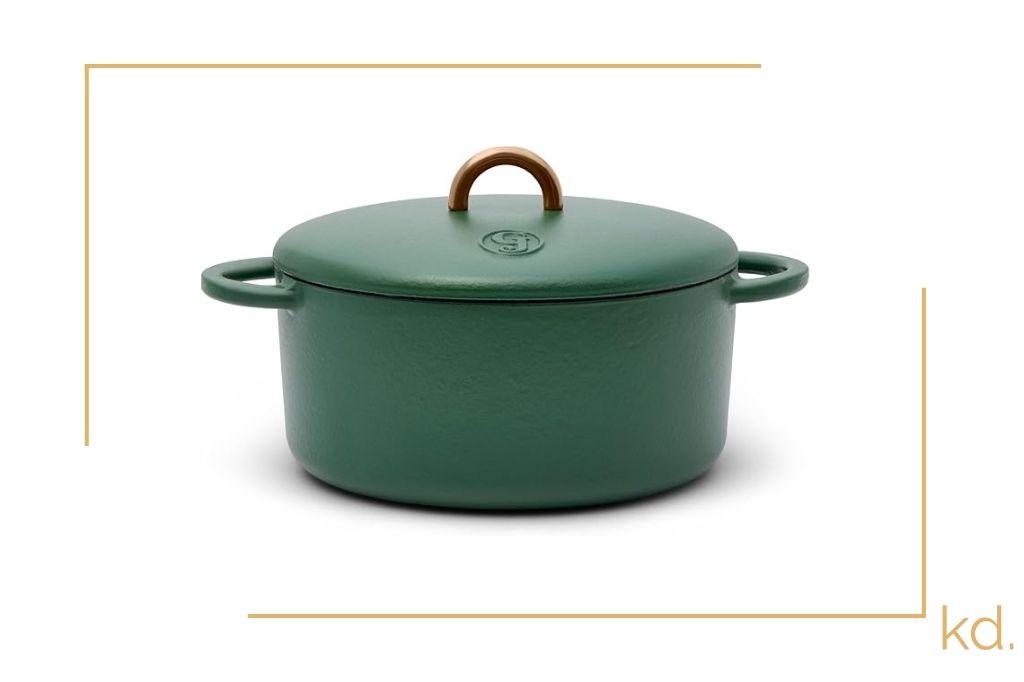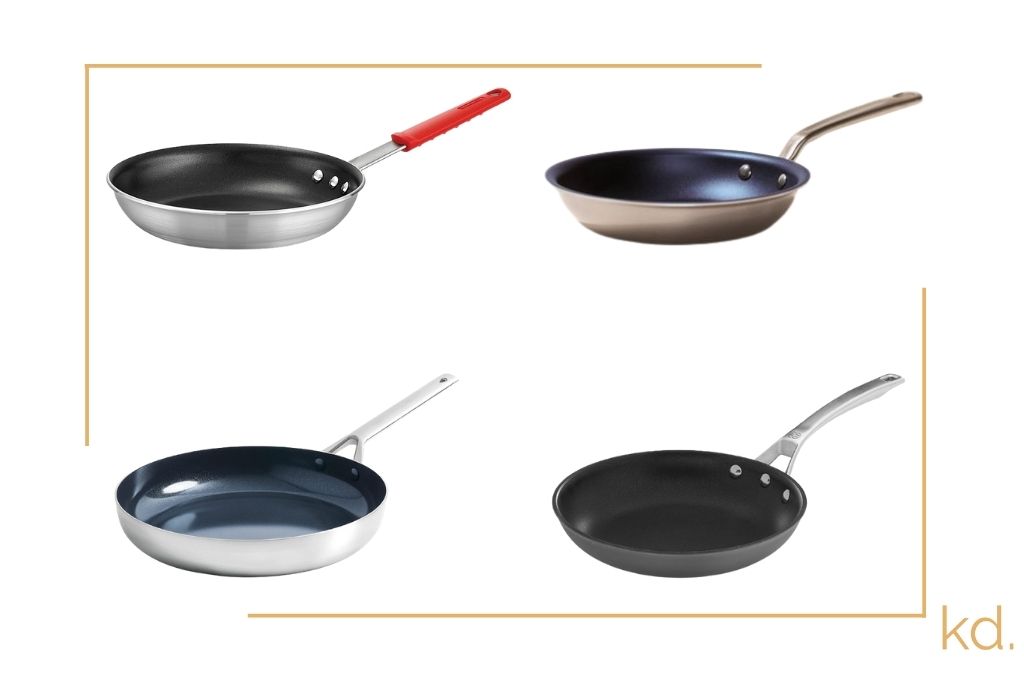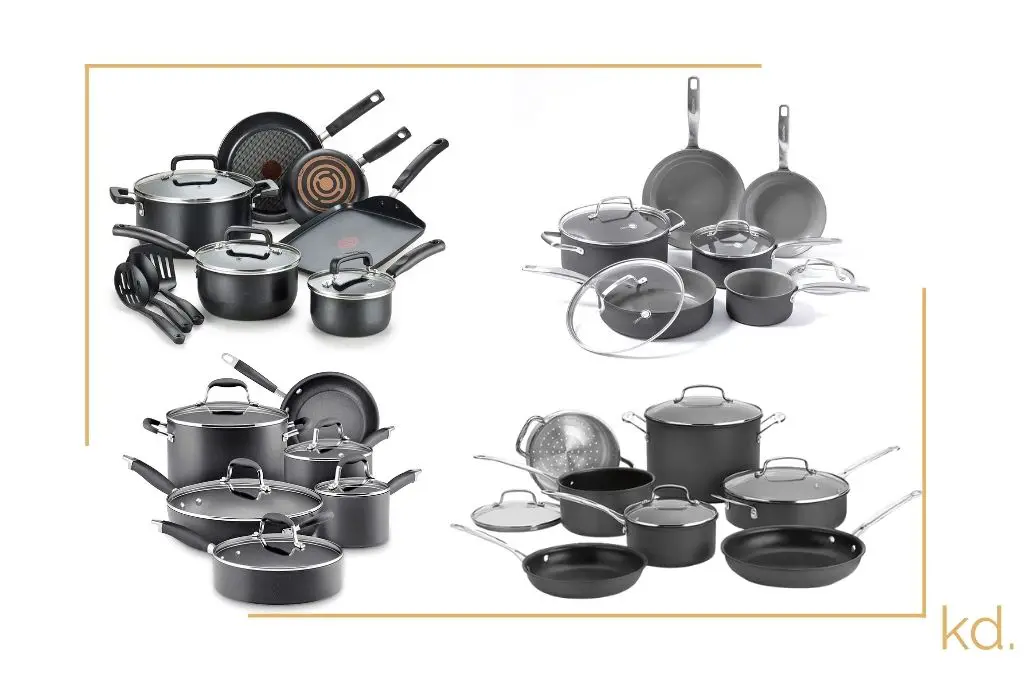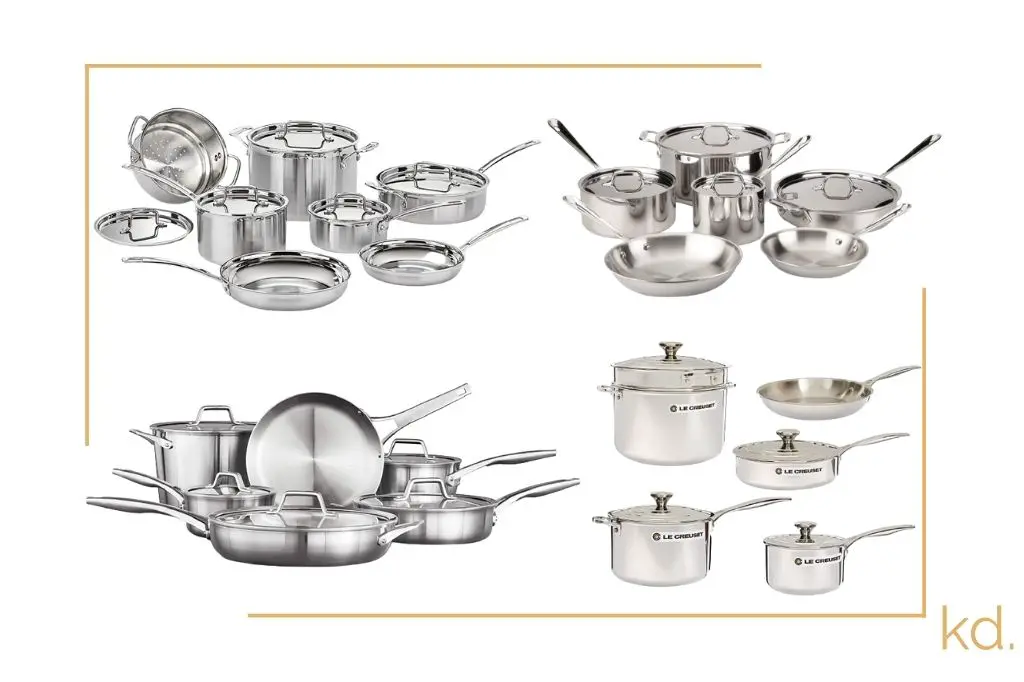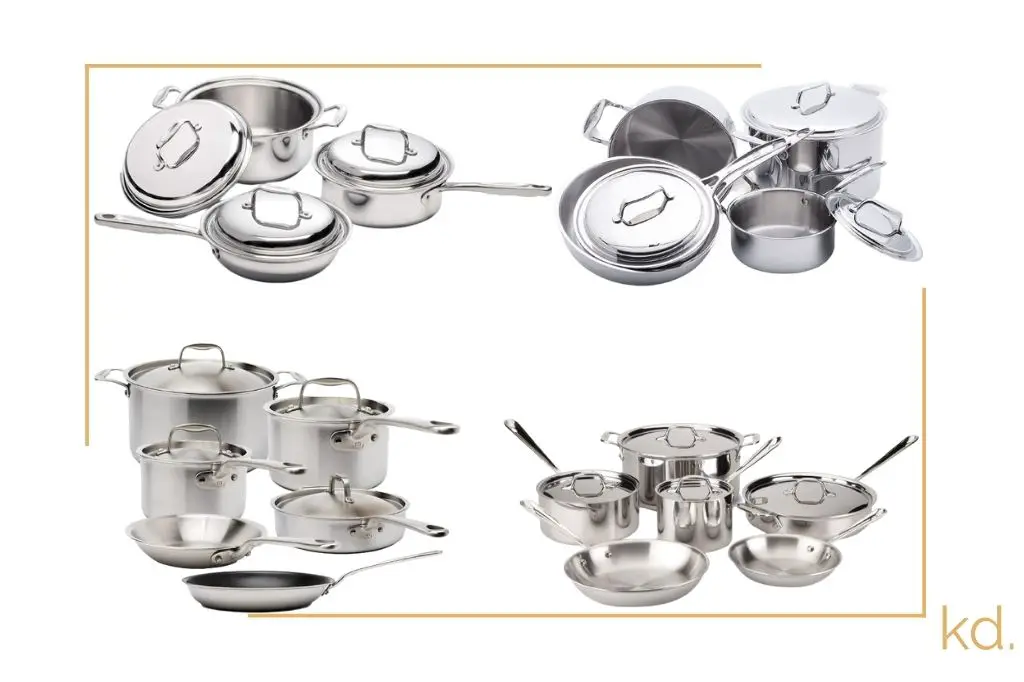If you’ve been scrolling through Instagram or browsing kitchen essentials online, chances are you’ve stumbled upon Caraway’s beautifully colored cookware sets. But is Caraway cookware worth the hype, or is it just another pretty face in your kitchen? Let’s dive deep into everything you need to know about Caraway home cookware, from its ceramic coating to its real-world performance.
Quick Links for Caraway Cookware
Caraway Nonstick Ceramic Cookware Set 12 Piece
Caraway Stainless Steel Cookware Set 12 Piece 5-Ply Stainless Steel
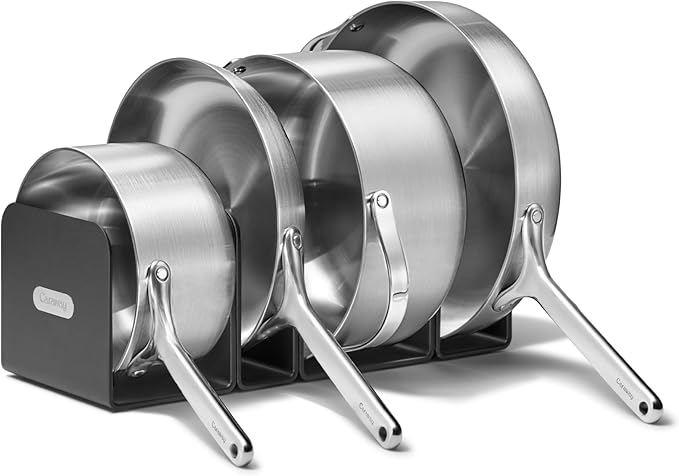
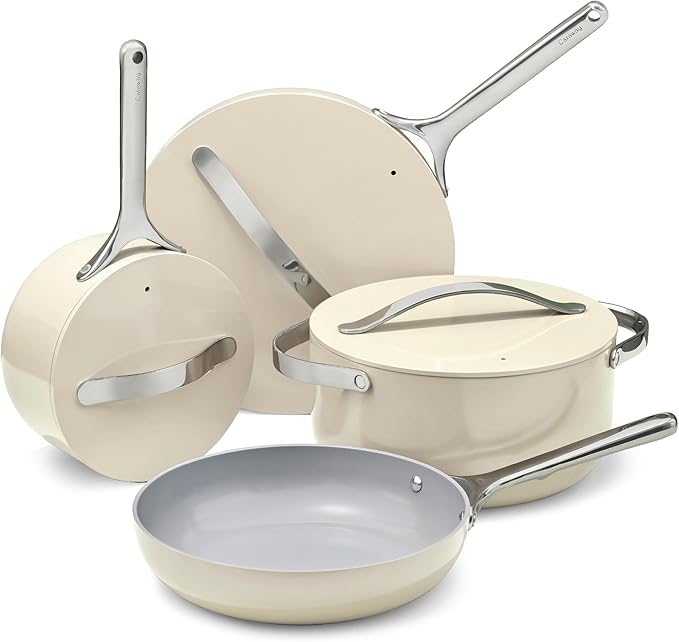
Table of Contents
What Makes Caraway Cookware Different?
Caraway has carved out a unique niche in the crowded cookware market by combining aesthetic appeal with health-conscious design. Founded in 2019, this direct-to-consumer brand quickly gained traction among millennials and Gen Z consumers who wanted cookware that looked Instagram-worthy but also delivered on performance.
The core philosophy behind Caraway ceramic cookware revolves around creating non-toxic, eco-friendly cooking vessels that don’t compromise on functionality. Unlike traditional non-stick pans that use PTFE (Teflon) coatings, Caraway pans utilize a ceramic non-stick surface derived from minerals. This means no PFOA, PTFE, PFAS, lead, cadmium, or other potentially harmful chemicals leaching into your food.
But Caraway isn’t just about what’s not in their products. The brand has focused on thoughtful design elements that make everyday cooking more enjoyable. From their signature pastel color palette to their innovative storage solutions, Caraway has reimagined what modern cookware should look like and how it should function in contemporary kitchens.
Unpacking the Caraway Cookware Collection
The Core Caraway Cookware Set
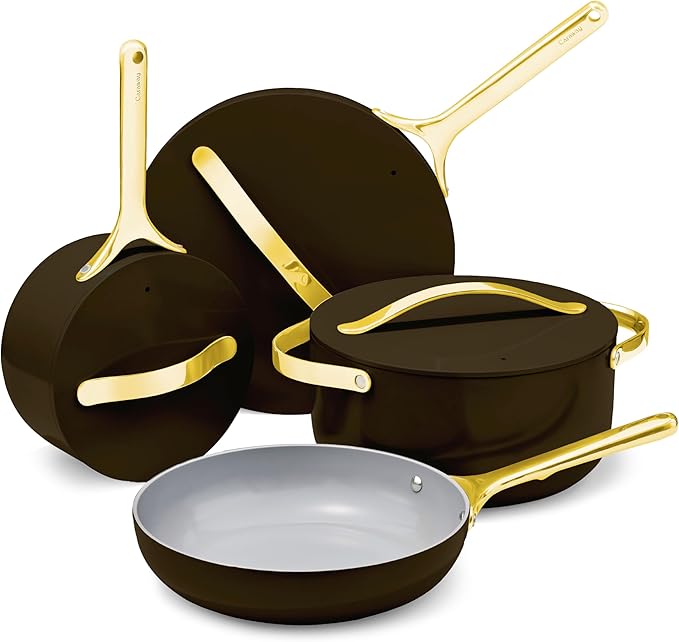
The heart of Caraway’s product line is their signature cookware set, which includes:
- 10.5″ Fry Pan: Perfect for everything from scrambled eggs to sautéed vegetables
- 3-Quart Sauce Pan with Lid: Ideal for sauces, grains, and small-batch soups
- 6.5-Quart Dutch Oven with Lid: Your go-to for stews, braises, pasta, and one-pot meals
- 10.5″ Sauté Pan with Lid: Great for searing, shallow frying, and dishes that need high sides
What sets this collection apart is the included storage system. Caraway provides a modular magnetic pan rack and canvas lid holder, addressing one of the biggest pain points in kitchen organization. No more clanging pots or wasted cabinet space—everything stacks neatly and looks good doing it.
Additional Pieces
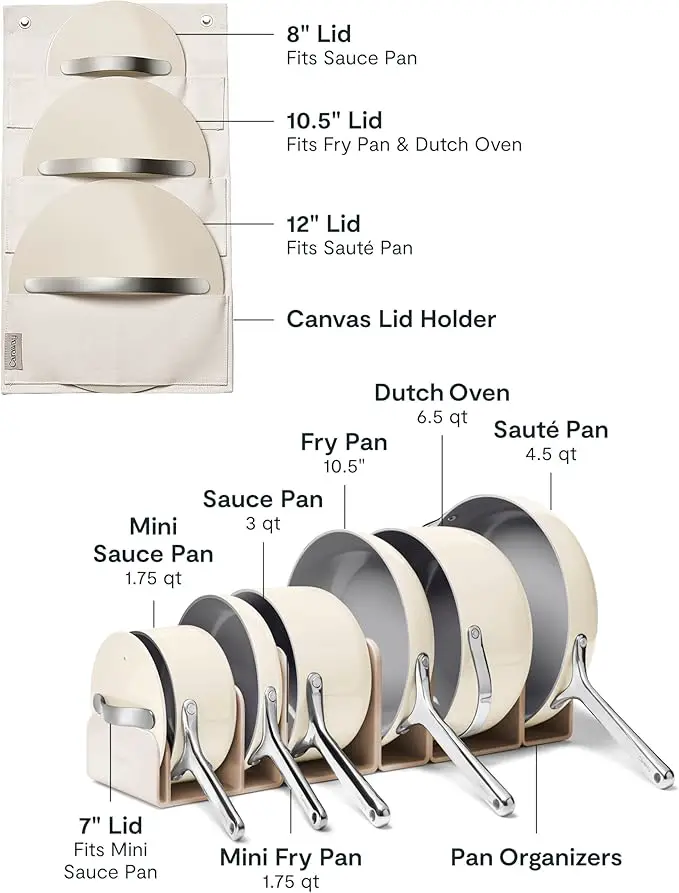
Beyond the core set, Caraway offers several standalone pieces:
- 10.5″ Fry Pan: A smaller option for single servings or side dishes
- 4.5 Quart Sauté Pan: When you need extra cooking surface
- 3-Quart Sauce Pan: Perfect for heating up soup or making small portions
- Mini Duo (Mini Fry Pan and Mini Saucepan): Adorable and functional for tiny tasks
- Sheet Pan and Roasting Pan: Completing your cooking arsenal with bakeware options
The Bakeware Collection
Caraway has expanded beyond stovetop cooking with a bakeware line that includes sheet pans, loaf pans, cake pans, and muffin tins—all featuring the same non-toxic ceramic coating and aesthetic appeal as their cookware.
Caraway Cookware Reviews: The Technical Details
Construction and Materials
Caraway cookware features an aluminum core body that provides excellent heat conductivity. Aluminum is lightweight yet efficient at distributing heat evenly, which helps prevent hot spots that can burn your food. The base is designed to work on all stovetops, including gas, electric, and induction.
The ceramic non-stick coating is where Caraway really shines in the health-conscious category. This mineral-based coating is applied without the use of potentially harmful chemicals, making it a safer alternative to traditional non-stick surfaces. The coating is also naturally slick, requiring less oil or butter for cooking.
Each piece features stainless steel handles that stay relatively cool during stovetop cooking (though oven mitts are always recommended). The handles are ergonomically designed with a comfortable grip that doesn’t feel flimsy or awkward when lifting heavy pots full of food.
Color Options
One of Caraway’s most distinctive features is their color selection. Available shades include:
- Cream (a warm off-white)
- Navy (deep blue)
- Sage (soft green)
- Perracotta (a sophisticated terracotta)
- Gray (modern slate)
- Marigold (cheerful yellow)
These Instagram-ready colors have become a signature of the brand, allowing home cooks to coordinate their cookware with their kitchen aesthetic. The finish is matte and smooth, giving the pieces a premium, modern look.
Heat Tolerance and Oven Safety
Caraway pans are oven-safe up to 550°F, which covers most home cooking needs. This means you can start a dish on the stovetop and finish it in the oven without transferring to another vessel. The lids are also oven-safe to the same temperature, making these pieces truly versatile.
However, it’s worth noting that the ceramic coating can be sensitive to extreme temperature changes. Rapid heating or cooling can potentially damage the non-stick surface over time, so it’s best to preheat gradually and avoid putting hot pans under cold water.
Performance Testing: How Does Caraway Cookware Actually Cook?
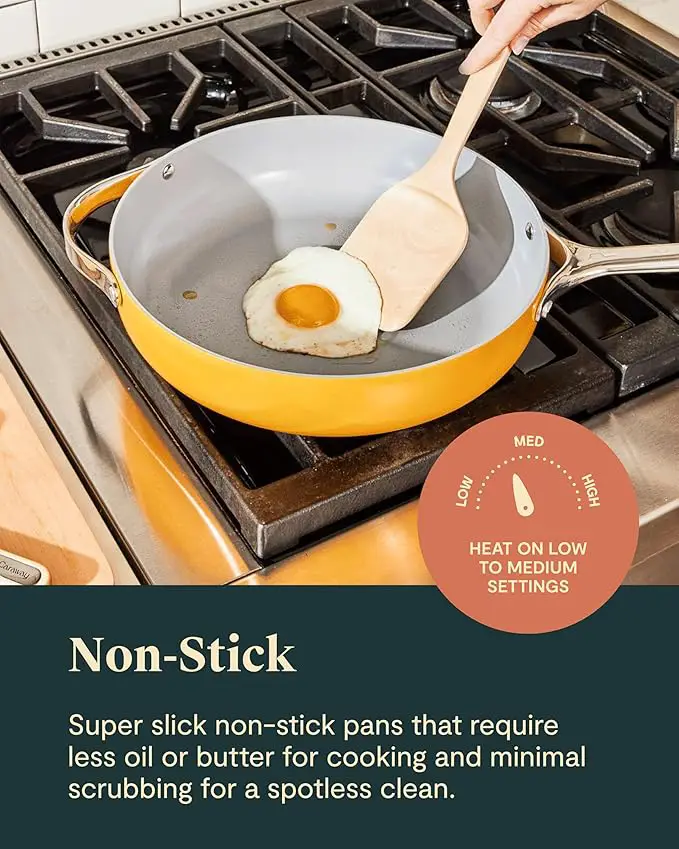
Heat Distribution
In real-world testing, Caraway ceramic cookware performs admirably when it comes to even heating. The aluminum core does an excellent job of distributing heat across the cooking surface, minimizing hot spots. When making pancakes or crepes, you’ll notice consistent browning across the entire pan surface—a good indicator of quality heat distribution.
That said, Caraway cookware does heat up relatively quickly compared to heavier-gauge options like cast iron or thick stainless steel. This is great for responsiveness and energy efficiency, but it also means you need to be slightly more attentive to prevent overheating, especially on high heat settings.
Non-Stick Performance
When brand new, Caraway’s ceramic non-stick surface is genuinely impressive. Eggs slide around effortlessly, pancakes flip with ease, and cleanup is a breeze. You can cook with minimal oil, which is great for healthier meal preparation.
However, the longevity of this non-stick performance is where things get more nuanced. Ceramic coatings, in general, don’t last as long as traditional PTFE coatings. Most users report that Caraway’s non-stick properties remain excellent for the first 6-12 months with proper care, then gradually decline over the next year or two.
The key phrase here is “with proper care.” Ceramic coatings are more delicate than many people expect. Using metal utensils, cooking on high heat, or using abrasive cleaners can all accelerate the degradation of the non-stick surface.
Versatility Across Cooking Techniques
The Caraway fry pans excel at everyday tasks like sautéing vegetables, cooking eggs, and pan-frying proteins. The slightly higher sides compared to some traditional fry pans make them versatile for tasks that require a bit more depth.
The Dutch oven is a workhorse for braising, making soups, cooking pasta, and even baking bread. Its capacity is generous without being unwieldy, and the lid creates a good seal for moisture retention.
The sauté pan sits in an interesting middle ground—it’s deep enough for dishes with sauce but has a wide enough surface area for good browning. It’s become many users’ go-to for one-pan meals and stir-fries.
Comprehensive Caraway Cookware Properties Table
| Property | Details |
|---|---|
| Material Construction | Aluminum core with ceramic non-stick coating |
| Coating Type | Mineral-based ceramic (PTFE-free, PFOA-free, PFAS-free) |
| Handle Material | Stainless steel |
| Stovetop Compatibility | Gas, electric, induction-compatible |
| Oven Safe Temperature | Up to 550°F (including lids) |
| Dishwasher Safe | Not recommended; hand washing preferred |
| Metal Utensil Safe | No; wood, silicone, or nylon recommended |
| Weight | Lightweight to medium (varies by piece) |
| Exterior Finish | Matte ceramic coating |
| Color Options | Cream, Navy, Sage, Perracotta, Gray, Marigold |
| Lid Material | Stainless steel with stay-cool handles |
| Base Design | Flat, induction-compatible aluminum base |
| Care Requirements | Hand wash, avoid high heat, use non-abrasive cleaners |
| Warranty | Limited lifetime warranty against manufacturer defects |
| Country of Origin | Designed in USA, manufactured overseas |
| Storage Solution | Includes magnetic pan rack and canvas lid holder |
The Pros: What Caraway Gets Right
1. Health-Conscious Design
The biggest selling point for many consumers is Caraway’s commitment to non-toxic materials. In an era where people are increasingly concerned about what goes into their bodies, having cookware free from PFAS, PTFE, lead, and cadmium provides genuine peace of mind. You’re not worrying about harmful chemicals leaching into your scrambled eggs every morning.
2. Aesthetic Appeal
Let’s be honest—Caraway cookware looks gorgeous. The matte finish and carefully curated color palette make these pieces worthy of display rather than hiding them in cabinets. If you’re someone who values kitchen aesthetics (and let’s face it, many of us do in the Instagram age), Caraway delivers.
3. Thoughtful Storage Solutions
The included magnetic pan rack and canvas lid holder solve a real problem. Cabinet space is precious, and traditional cookware storage is inefficient and noisy. Caraway’s storage system is genuinely innovative and makes these pieces easier to live with in real kitchens.
4. Lightweight and Easy to Handle
Compared to cast iron or heavy stainless steel, Caraway pans are notably lighter. This makes them accessible for people with limited grip strength or mobility issues. Maneuvering a full Dutch oven from stovetop to oven is much easier when it’s not absurdly heavy.
5. Initial Non-Stick Performance
When new and properly maintained, Caraway’s ceramic coating performs beautifully. Cooking with minimal oil is genuinely possible, and cleanup is remarkably easy. Those first several months of use can feel almost magical compared to cookware that requires more fat or constant scrubbing.
6. Induction Compatible
The fact that all Caraway home cookware works on induction cooktops expands its versatility. As more kitchens shift toward induction cooking for energy efficiency, having compatible cookware becomes increasingly important.
7. Complete System Approach
Rather than just selling individual pans, Caraway offers curated sets that cover most cooking needs. This takes the guesswork out of building a cookware collection and ensures aesthetic consistency across all pieces.
8. Limited Lifetime Warranty
Caraway backs their products with a limited lifetime warranty against manufacturing defects. While this doesn’t cover normal wear and tear or damage from misuse, it does provide some protection against premature failure.
9. Even Heating
The aluminum core does an admirable job of distributing heat evenly, which translates to better cooking results and fewer burnt spots or undercooked areas.
10. No Seasoning Required
Unlike cast iron, Caraway cookware is ready to use right out of the box. There’s no seasoning process or special preparation needed—just wash and start cooking.
The Cons: Where Caraway Falls Short
1. Ceramic Coating Durability
This is the elephant in the kitchen. Ceramic non-stick coatings simply don’t last as long as traditional PTFE coatings or the natural seasoning on cast iron. Most users report noticeable decline in non-stick performance after 12-24 months, even with careful use. For some, this may feel like a dealership where you’re essentially “renting” peak performance.
2. High Heat Sensitivity
Caraway explicitly recommends cooking on low to medium heat to preserve the ceramic coating. While this is fine for many cooking tasks, it limits your ability to get a serious sear on meats or achieve the high heat that some cooking techniques require. If you love wok cooking or high-heat searing, you’ll be frustrated by these limitations.
3. Delicate Care Requirements
These aren’t throw-in-the-dishwasher, scrub-with-steel-wool kind of pans. They require gentle hand washing, specific utensils, and careful heat management. For busy people or those who prefer low-maintenance cookware, this can feel like a lot of babying.
4. Not Metal Utensil Safe
Having to avoid metal utensils is a legitimate inconvenience. While wood and silicone options exist, many cooks instinctively reach for metal spatulas or whisks. One absent-minded moment with a metal fork can scratch the coating.
5. Limited Color Mixing
If you want to buy individual pieces to supplement your set, you’re locked into your original color choice if you want aesthetic consistency. The sets only come in single colors, which may disappoint those who wanted a more eclectic look.
6. Lighter Weight Can Be a Drawback
While the lightweight construction has benefits, it also means these pans don’t have the heft and heat retention of heavier cookware. They cool down quickly when you add cold ingredients, which isn’t ideal for maintaining consistent cooking temperatures in some scenarios.
7. Storage System Requires Space
While the magnetic rack is clever, it does require vertical cabinet or counter space. If you have limited space or awkwardly shaped cabinets, the storage solution might not work as well as intended.
8. Stainless Steel Handles Get Hot
Although the handles stay cooler than the pan body, they’re still steel and will eventually conduct heat during extended stovetop cooking. This is normal for this type of construction, but it’s worth noting if you’re used to stay-cool handles.
9. Not Ideal for Browning or Deglazing
The recommendations to use low-to-medium heat and avoid thermal shock mean you can’t develop fond (those delicious browned bits) as effectively as you can with traditional cookware. Deglazing can also be trickier since you need to be gentle with temperature changes.
10. Investment for Limited Lifespan
When you consider the premium positioning alongside the realistic 2-4 year peak lifespan of the ceramic coating, the value proposition becomes questionable. You’re paying a lot for something that won’t last as long as properly maintained stainless steel or cast iron.
Real User Experiences: What Are People Saying?
The Honeymoon Phase Reviews
Many Caraway cookware reviews from users in their first few months are overwhelmingly positive. The unboxing experience is delightful, the pans perform beautifully right out of the gate, and the aesthetic appeal is undeniable. These early reviews often give 5-star ratings and rave about the non-stick properties and ease of cleaning.
The One-Year Mark
Around the 12-month point, reviews become more nuanced. Many users note that the non-stick performance has declined somewhat, though most still find the cookware functional. Common observations include needing slightly more oil than before and noticing that eggs aren’t quite as slippery as they once were.
Long-Term Perspectives
Users who’ve had their Caraway sets for 2+ years often report more significant decreases in non-stick performance. Some describe their pans as essentially no longer non-stick, requiring as much oil as traditional cookware. However, many still appreciate the aesthetic and non-toxic properties, even if the performance has declined.
Common Complaints
The most frequent complaints across the timeline include:
- Ceramic coating wearing down faster than expected
- Food beginning to stick after extended use
- Difficulty achieving proper browning on proteins
- Disappointment with longevity relative to cost
Common Praise
Consistent positive feedback includes:
- Beautiful appearance and color options
- Excellent non-stick performance when new
- Peace of mind from non-toxic materials
- Smart storage solutions
- Lightweight and easy to handle
- Even heating without hot spots
Caring for Your Caraway Cookware: Maximizing Lifespan
If you decide to invest in Caraway ceramic cookware, proper care is essential for maximizing its performance and lifespan. Here’s what you need to know:
Daily Cleaning
Always hand wash your Caraway pans with warm water and a soft sponge or cloth. Use a mild dish soap and avoid anything abrasive like steel wool or harsh scrubbing pads. Even though the ceramic coating feels durable, abrasive materials will create micro-scratches that degrade the non-stick surface over time.
For stuck-on food, let the pan soak in warm, soapy water for 15-30 minutes rather than scrubbing aggressively. Most residue will loosen with patience rather than elbow grease.
Dry your cookware thoroughly before storing to prevent water spots and maintain the matte finish.
Cooking Best Practices
Temperature control is critical. Stick to low and medium heat settings for most cooking tasks. High heat can damage the ceramic coating and cause it to break down prematurely. Remember, the aluminum core conducts heat efficiently, so you don’t need high settings to achieve good cooking temperatures.
Preheat gradually rather than cranking the heat up immediately. A slow, steady preheat is gentler on the ceramic coating and promotes even heat distribution.
Use appropriate utensils—wood, silicone, or nylon only. Keep metal spatulas, whisks, and forks away from these pans. Even a single deep scratch can compromise the non-stick properties.
Add oil or butter even though these are marketed as needing minimal fat. A light coating of oil not only improves cooking performance but also helps protect the ceramic surface.
Avoid temperature shock by never putting a hot pan under cold water or placing a cold pan on high heat. Let pans cool down naturally before washing, and always preheat gradually.
Storage
Take advantage of the included storage system. The magnetic rack keeps pans organized while preventing them from scratching against each other. If you need to stack without the rack, place a soft cloth or paper towel between pieces to prevent surface damage.
Store lids separately using the canvas holder to prevent rim damage and conserve space.
What to Avoid
- Never use cooking spray, despite it seeming convenient. Spray oils contain additives that create buildup on ceramic coatings, eventually causing food to stick.
- Don’t use in the dishwasher, even though it might technically be safe. The harsh detergents and high heat of dishwashers accelerate ceramic coating degradation.
- Avoid broiling even though the pans are oven-safe. The extreme direct heat of a broiler can damage the coating.
- Don’t cut food in the pan with knives, which seems obvious but is worth stating explicitly.
Restoration and Maintenance
If you notice slight sticking developing, try this restoration trick: wash the pan thoroughly, dry it completely, then rub a small amount of cooking oil over the entire cooking surface with a paper towel. Heat the pan on low for a few minutes, let it cool, then wipe away any excess oil. This can sometimes rejuvenate the non-stick properties temporarily.
For stubborn stains or discoloration, make a paste with baking soda and water, gently rub it on the affected areas, then rinse thoroughly. This mild abrasive is generally safe for ceramic coatings when used occasionally and gently.
The Caraway Cookware Buying Guide: Is It Right for You?
Who Should Buy Caraway Cookware?
You’re an ideal Caraway customer if:
- Health consciousness is a priority and you want to avoid PFAS, PTFE, and other potentially harmful chemicals in your cookware
- Aesthetics matter to you and you want cookware that looks as good as it performs
- You have a small to medium-sized household and the standard set sizes meet your cooking needs
- You cook primarily at low to medium heat and don’t require extreme high-heat searing
- You’re willing to invest time in proper care and maintenance of your cookware
- Kitchen organization appeals to you and you appreciate the included storage solutions
- You have an induction cooktop and need compatible cookware
- You’re building your first “real” cookware collection and want a curated set that covers the basics
- You value ease of cleaning and want non-stick performance for everyday cooking
- You’re an experienced cook who understands the limitations of ceramic coatings and accepts them
Who Should Look Elsewhere?
Caraway might not be the best choice if:
- You need cookware that lasts decades without performance degradation—consider stainless steel or cast iron
- You regularly cook at high heat or love achieving restaurant-style sears on proteins
- You prefer low-maintenance cookware that can withstand casual abuse—Caraway requires gentle care
- You have a large family and need bigger capacity pieces than Caraway offers
- Budget is tight and you need maximum longevity for your investment
- You want truly versatile cookware that can go from stovetop to oven to table without restrictions
- You’re a professional chef who needs commercial-grade durability
- You prefer traditional finishes like polished stainless or raw cast iron over colored coatings
- You’re extremely rough on cookware and don’t want to worry about scratches or special care
Comparing Caraway to Alternatives
Caraway vs. Our Place (Always Pan): Our Place offers a similar aesthetic and non-toxic approach with their signature Always Pan. The Always Pan is more of an all-in-one piece, while Caraway provides a complete set. Caraway generally offers better variety and the storage solution, while Our Place focuses on versatility in fewer pieces.
Caraway vs. GreenPan: GreenPan is another ceramic cookware brand with similar health benefits. GreenPan typically comes in at a lower price point but with less aesthetic appeal. The performance is comparable, though GreenPan offers more variety in product lines and price ranges.
Caraway vs. Traditional Non-Stick (Teflon): Traditional PTFE coatings generally last longer and perform better at high heat than ceramic. However, they lack the health-conscious appeal of Caraway’s ceramic coating. If performance and longevity trump the non-toxic aspect for you, traditional non-stick might be a better choice.
Caraway vs. Stainless Steel: Stainless steel cookware like All-Clad will outlast Caraway by decades if properly maintained. However, stainless requires more skill to cook with (it’s not non-stick), needs more fat, and is significantly heavier. The trade-off is durability versus ease of use.
Caraway vs. Cast Iron: Cast iron offers unparalleled durability and heat retention but requires seasoning, is very heavy, and reacts with acidic foods. Cast iron is ideal for high-heat cooking that would damage Caraway’s ceramic coating. Think of them as complementary rather than competitive—many cooks benefit from having both.
What to Consider Before Buying
Your cooking style: Honestly assess how you actually cook. Do you meal prep once a week or cook fresh daily? Do you make quick weeknight dinners or elaborate weekend projects? Do you use high heat or prefer gentler cooking? Your honest answers should guide your decision.
Your commitment to care: Be realistic about whether you’ll hand wash every time, use only appropriate utensils, and manage heat carefully. If you know you’re going to throw these in the dishwasher or use metal spatulas, save your money—you’ll destroy the coating quickly.
Your timeline expectations: Understand that ceramic coatings have a limited prime lifespan. If you’re expecting decades of like-new performance, you’ll be disappointed. If you’re comfortable with a 2-4 year replacement cycle for peak performance, that’s a more realistic expectation.
Your kitchen setup: Do you have the cabinet space for the storage system? Is your cooktop compatible? Do you have the appropriate utensils already, or will you need to invest in those too?
Your values alignment: If non-toxic, aesthetically pleasing, thoughtfully designed cookware aligns with your values, Caraway might be worth the premium despite its limitations. If you value pure performance and longevity above all else, other options might suit you better.
Building Your Caraway Collection
If you’re convinced Caraway is right for you, here’s how to approach building your collection:
Start with the core set if you’re building from scratch or replacing an entire collection. This gives you the essential pieces plus the storage system, which is more economical than buying individually.
Add selectively if you already have some good cookware. Perhaps you just need a high-quality non-stick fry pan for eggs and can keep your other pieces for different tasks. The 10.5″ fry pan is a popular standalone purchase.
Consider the mini pieces if you frequently cook for one or make side dishes. The Mini Duo is surprisingly useful and adorable to boot.
Think about the bakeware if you’re committed to the aesthetic and want a cohesive kitchen collection. The sheet pans and baking dishes follow the same design philosophy as the cookware.
Choose your color strategically. Remember, you’re likely committing to this color for the full collection. Consider your kitchen’s existing color scheme and whether you want the cookware to blend in or stand out.
Maintenance Timeline: What to Expect
Months 0-6: The Golden Age
Your Caraway cookware will perform beautifully. Non-stick properties are excellent, cleaning is effortless, and you’ll wonder why you didn’t buy these sooner. Enjoy this phase and take great care of your pans to extend it.
Months 6-12: Subtle Changes
You might notice slight decreases in non-stick performance, particularly on pieces you use most frequently. Eggs might require a bit more butter, and pancakes might not slide quite as freely. This is normal. Continue careful maintenance.
Months 12-24: Noticeable Decline
The non-stick coating will show more obvious wear. You’ll need more oil than initially, and cleanup may require a bit more effort. The cookware is still functional and beneficial, but it’s not performing like new.
Months 24-36: Decision Point
By this point, many users decide whether to replace their pieces or adjust their expectations. Some find the cookware still useful with adjusted techniques (more oil, lower heat, gentler foods). Others feel the performance has degraded too much and consider replacement.
Beyond 36 Months: Extended Use
The ceramic coating is likely significantly compromised. These pieces may no longer function as non-stick cookware but can still serve as standard aluminum cookware if you’re okay with using adequate fats and accepting more sticking.
The Bottom Line: Final Verdict on Caraway Cookware
Caraway has successfully created a beautiful, health-conscious cookware line that genuinely performs well within its limitations. The aesthetic appeal is undeniable, the non-toxic materials provide peace of mind, and the thoughtful design elements like the storage system show real innovation.
However, the ceramic coating’s limited lifespan means you’re making a different value calculation than with traditional long-term cookware investments. This isn’t heirloom cookware you’ll pass down to your grandchildren—it’s stylish, functional cookware with a realistic lifespan of a few years of peak performance.
For the right person—someone who values aesthetics and non-toxic materials, cooks at low-to-medium heat, and is willing to provide gentle care—Caraway can be an excellent choice. The daily experience of cooking with these beautiful, well-designed pieces brings genuine joy to many users.
For someone who needs maximum durability, high-heat capabilities, or low-maintenance cookware, other options will serve you better. There’s no shame in acknowledging that Caraway’s particular set of trade-offs doesn’t align with your cooking style or priorities.
The honest assessment: Caraway cookware is very good at what it’s designed to do, but it requires accepting certain limitations. If you go in with realistic expectations about ceramic coating longevity, heat restrictions, and care requirements, you’re unlikely to be disappointed. If you expect traditional non-stick or stainless steel durability, you will be.
The recommendation: Consider Caraway if you’re looking for beautiful, non-toxic everyday cookware and accept the trade-offs. Consider alternatives if you need extreme durability, high-heat cooking, or minimal maintenance requirements.
Ultimately, the best cookware is the cookware you’ll actually use, care for properly, and enjoy cooking with. For many people, Caraway checks all those boxes. For others, different options will be a better fit. Only you can decide which category you fall into based on your cooking habits, values, and priorities.
Frequently Asked Questions About Caraway Cookware
Is Caraway cookware really non-toxic?
Yes, Caraway uses a ceramic coating that’s free from PFOA, PTFE, PFAS, lead, and cadmium. The coating is mineral-based rather than chemical-based.
How long does the non-stick coating last?
With proper care, expect peak non-stick performance for 12-24 months, with gradual decline afterward. Total useful life varies based on use and care but typically ranges from 2-4 years.
Can I use Caraway on induction cooktops?
Yes, all Caraway cookware is induction-compatible thanks to the aluminum base construction.
Should I buy the set or individual pieces?
The set offers better value if you need multiple pieces and includes the storage system. Individual pieces make sense if you’re supplementing existing cookware.
Can I put Caraway in the dishwasher?
While technically possible, hand washing is strongly recommended to preserve the ceramic coating and extend its lifespan.
What’s the best way to season Caraway cookware?
You don’t need to season ceramic cookware like cast iron. Simply wash before first use and cook with appropriate oils or fats.
Does Caraway cookware work well for searing meat?
Caraway is designed for low-to-medium heat cooking. While you can cook meat in it, you won’t achieve the same high-heat sear as with stainless steel or cast iron.
Is the warranty good?
Caraway offers a limited lifetime warranty against manufacturing defects, but this doesn’t cover normal wear and tear of the ceramic coating.
Whether you’re drawn to Caraway’s Instagram-worthy aesthetic, attracted to its non-toxic materials, or simply looking for capable everyday cookware, understanding what you’re really getting helps you make an informed decision. Caraway cookware isn’t perfect, but for the right kitchen and the right cook, it can be a beautiful, functional addition that makes daily cooking more enjoyable. Just remember: realistic expectations lead to satisfaction, so go in knowing both the strengths and limitations of ceramic cookware, and you’ll be much happier with your investment.
